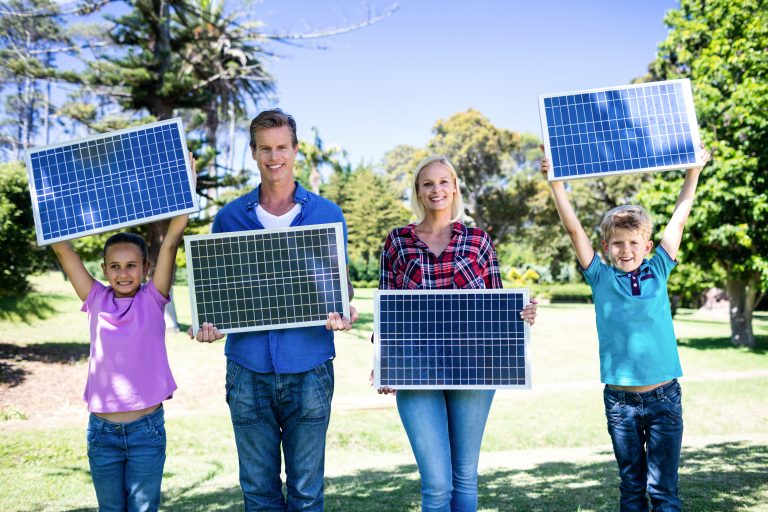

(Source Wikipedia) – https://en.wikipedia.org/wiki/Solar_power_in_Australia
Solar power in Australia is a growing industry. As of June 2018, Australia had over 8,452 MW of installed photovoltaic (PV) solar power, of which 1,998 MW were installed in the preceding 12 months. In 2017, 23 solar PV projects with a combined installed capacity of 2,034 MW were either under construction, constructed or due to start construction having reached financial closure. PV accounted for 2.4% of Australia’s electrical energy production in 2014/15.
- Feed-in tariffs and renewable energy targets designed to assist renewable energy commercialisation in Australia have largely been responsible for the rapid increase. In South Australia, a solar feed-in tariff was introduced for households and an educational program that involved installing PVs on the roofs of major public buildings such as the Adelaide Airport, State Parliament, Museum, Art Gallery and several hundred public schools. In 2018, the Queensland government introduced the Affordable Energy Plan offering interest free loans for solar panels and solar storage in an effort to increase the uptake of solar energy in the state. In 2008 Premier Mike Rann announced funding for $8 million worth of solar panels on the roof of the new Goyder Pavilion at the Royal Adelaide Showgrounds, the largest rooftop solar installation in Australia, qualifying it for official “power station” status.[6] South Australia has the highest per capita take up of household solar power in Australia.
- The installed PV capacity in Australia has increased 10-fold between 2009 and 2011, and quadrupled between 2011 and 2016. The first commercial-scale PV power plant, the 1 MW Uterne Solar Power Station, was opened in 2011.] Greenough River Solar Farm opened in 2012 with a capacity of 10 MW. The price of photovoltaics has been decreasing, and in January 2013, was less than half the cost of using grid electricity in Australia.
- Australia has been internationally criticised for producing very little of its energy from solar power, despite its vast resources, extensive sunshine and overall high potential.
POTENTIAL
- The combination of Australia’s dry climate and latitude give it high benefits and potential for solar energy production. Most of the Australian continent receives in excess of 4 kilowatt-hours (14 MJ) per square metre per day of insolation during winter months, with a region in the north exceeding 6 kilowatt-hours (22 MJ) per square metre per day.
- Australia’s insolation greatly exceeds the average values in Europe, Russia, and most of North America. Comparable levels are found in desert areas of northern and southern Africa, south western United States and adjacent area of Mexico, and regions on the Pacific coast of South America. However, the areas of highest insolation are distant to Australia’s population centres.
- With an installed photovoltaic capacity of 5,900 MW at the end of 2016, Australia ranks among the world’s top ten solar countries. The installed capacity in 2015 was 5,070 MW.
INCENTIVES
REBATES
The Solar Homes and Communities Plan was a rebate provided by the Australian Government of up to A$8,000 for installing solar panels on homes and community use buildings (other than schools). This rebate was phased out on 8 June 2009, to be replaced by the Solar Credits Program, where an installation of a solar system would receive 5 times as many Renewable Energy Certificates for the first 1.5 kilowatts of capacity under the Renewable Energy Target (see below). Schools were eligible to apply for grants of up to A$50,000 to install 2 kW solar panels and other measures through the National Solar Schools Program beginning on 1 July 2008, which replaced the Green Vouchers for Schools program. Applications for the program ended 21 November 2012. A total of 2,870 schools have installed solar panels. The output of each array can be viewed, and compared with that of up to four other schools.
FEED-IN-TARIFFS
A number of states have set up schemes to encourage the uptake of solar PV power generation involving households installing solar panels and selling excess electricity to electricity retailers to put into the electricity grid, widely called “feed-in”. Each scheme involves the setting of feed in tariffs, which can be classified by a number of factors including the price paid, whether it is on a net or gross export basis, the length of time payments are guaranteed, the maximum size of installation allowed and the type of customer allowed to participate. Many Australian state feed-in tariffs were net export tariffs, whereas conservation groups argued for gross feed-in tariffs. In March 2009, the Australian Capital Territory (ACT) started a solar gross feed-in tariff. For systems up to 10 kW the payment was 50.05 cents per kWh. For systems from 10 kW to 30 kW the payment was 40.04 cents per kWh. The payment was revised downward once before an overall capacity cap was reached and the scheme closed. Payments are made quarterly based on energy generated and the payment rate is guaranteed for 20 years. In Germany, a guaranteed PV tariff means that (as of 2006) Germany now has the highest PV capacity per capita – at 10 W for every person in Germany compared to Australia at 2.6 W per capita.
RENEWABLE ENERGY TARGETS
In 2001, the Australian government introduced a mandatory renewable energy target (MRET) designed to ensure renewable energy achieves a 20% share of electricity supply in Australia by 2020. The MRET was to increase new generation from 9,500 gigawatt-hours to 45,000 gigawatt-hours by 2020. The MRET requires wholesale purchasers of electricity (such as electricity retailers or industrial operations) to purchase renewable energy certificates (RECs), created through the generation of electricity from renewable sources, including wind, hydro, landfill gas and geothermal, as well as solar PV and solar thermal. The objective is to provide a stimulus and additional revenue for these technologies. The scheme was proposed to continue until 2030.
